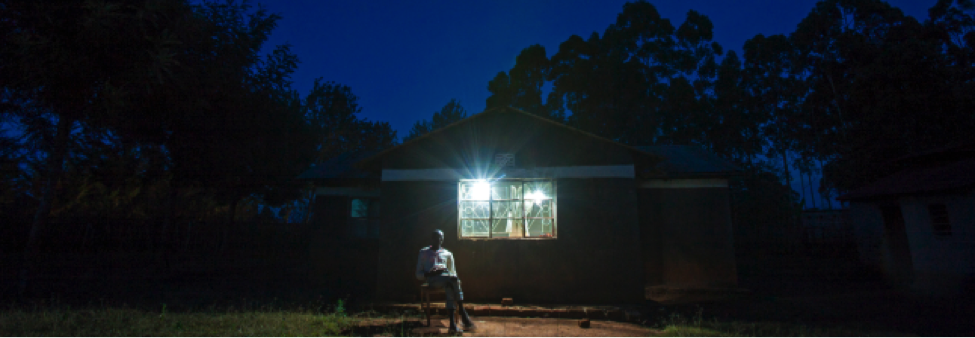How the world’s largest philanthropic foundation is using impact investments to steer biotech, edtech and fintech to low-income customers at home and abroad.
By David Bank and Dennis Price
A new kind of strategic investor is sniffing around promising startups and innovative entrepreneurs.
These strategists are not corporate suits seeking a competitive edge. They are officers of private foundations looking for scientific breakthroughs on neglected diseases, technologies that can be steered toward disadvantaged populations and financing models that harness the power of markets for the benefit of the poor.
The biggest of these new suitors is the Bill & Melinda Gates Foundation. At the insistence of Bill himself, the foundation made its first “program-related investment” in 2009. Since then, it has made nearly 50 loans, equity investments, and guarantees to further the foundation’s charitable purpose, totaling more than $1 billion. In the last seven years, the world’s largest foundation has become one of the world’s largest impact investors.
To share what it has learned, the foundation provided unprecedented access to ImpactAlpha and Stanford University’s Paul Brest, a leading thinker and commentator on impact investing.
“Making markets work for the poor” is the strategic intent of the Gates Foundation’s program-related investment portfolio. That goal, lofty as it is, can sometimes create complications for entrepreneurs, co-investors and companies, as our set of narrative profiles shows.
“This is not all that different from what we’ve seen over last 40 years ,” says Larry Mohr, a veteran Silicon Valley venture capitalist who co-invested with the Gates Foundation in a promising edtech company. “The parallel is that they both have objectives that are totally unrelated to the company.”
The project, a 40-page supplement in the Stanford Social Innovation Review, includes narrative articles about eight of the foundation’s noteworthy investments, an explanatory overview and a meaty Q&A with Julie Sunderland, the founding director of the foundation’s in-house investment team.
“How do we create incentives and how do we enable the most overlap between our objectives and the objectives of the company?” asks Sunderland, who recently left the foundation to pursue biotech investing more directly. “If there is a lot of overlap and we can de-risk or we can provide capital in creative ways to enable them to do the things that they want to do, those are our best deals.”
Making Markets Work for the Poor, is a deep dive into how the Gates Foundation leverages its immense balance sheet to make program-related investments. We reviewed hundreds of pages of investment memos, strategic memos, emails and other internal documents and interviewed more than three dozen entrepreneurs, executives, investees, co-investors and foundation staffers.
In the package, we show:
- How the foundation lost its entire investment in one biotech company – and reaped a 17-fold return on another.
- How a minor financial misstep earned Root Capital a dose of “tough love” that ultimately helped the agricultural lender grapple with the dangers of rapid growth.
- How the foundation used its deep pockets and superior market knowledge to steer pharma giants Merck and Bayer toward a low-price, high-volume strategy for contraceptive implants for women in low-income countries.
- How the foundation saw something more in the off-grid solar revolution in Africa: a way to expand commercial lending for the poor.
Significantly, foundation officials owned up to trials as well as triumphs. In one case, an edtech company veered away from its target customers in order to satisfy the charitable requirements that came with the foundation’s investment. The lesson for entrepreneurs: the social and environmental objectives of strategic impact investors are sometimes at odds with a company’s commercial path.
Strategic program-related investments are not new. The Ford Foundation began making them in 1969. Since, pioneers like the MacArthur, Packard and Annie E. Casey Foundations, and more recently, the Kresge Foundation have expanded their toolset beyond traditional grants.
The Gates Foundation has pushed the boundaries of the new tools. Many of the examples cited by the IRS in its expanded guidance on PRI use could have been pulled from the Gates Foundation playbook, including for loans to smallholder farmer producer groups, equity investments in biotech startups and guarantees on loans to nonprofits.
“We’re not delusional about the private sector and about capitalism,” continues Sunderland. “We know that markets don’t work well for the poor for very, very good reasons. It’s not theoretical.”
By strategically investing to prove new models, reduce financial risks, increase liquidity and, sometimes even, boost returns, foundations like the Gates Foundations are aiming to close capital caps and fix failures left by a market that all too often doesn’t work for the poor. Sometimes such investments work, other times they don’t. A critical question we sought to answer throughout the report is: why?
The foundation’s PRI portfolio includes 20 equity investments totaling more than $200 million, 11 loans combining for more than $100 million and 12 guarantees reaching nearly $600 million.
The foundation has made 14 investments, more than $167 million in sum, directly into biotech companies in hopes of a hit on vaccines and drugs for a range of neglected diseases such as malaria, HIV and typhoid fever. Most of the capital has been deployed for global development, including expanded access to finance and health services for the poor, and to agricultural development, primarily in sub-Saharan Africa.
The occasional home-run aside, the foundation anticipates an approximate 10 percent loss of capital on its PRI portfolio as a whole. “The reality is that the poor don’t have much money and therefore profit margins are slim,” Sunderland says. “The only way that you can create good business models to serve the poor is to get to high volume and large scale with small margins.”
Impactalpha creates editorial and data products that serve the growing number of people who believe social and environmental solutions are the biggest business opportunities of the 21st century. We’re on the impact beat, telling the stories, calling the trends, tracking the deals, and watchdogging the impact.
David Bank is editor and CEO of ImpactAlpha: Investment News for a Sustainable Edge. He was previously a reporter for The Wall Street Journal and a vice president at Encore.org.
Dennis Price is a writer and project director at ImpactAlpha. He has more than a decade of experience at the intersection of markets and development.
Here’s a full list of the package contents:
Making Markets Work for the Poor
How the Bill & Melinda Gates Foundation Uses Program-Related Investments
Philanthropy’s New Tools for Innovation and Impact by Susan Desmond-Hellmann
Investing in smart strategies and passionate people.
Leveraging the Balance Sheet
A conversation with Julie Sunderland, founding director of Program Related Investments at the Bill & Melinda Gates Foundation.
Neglected No More
Nudging biotech startups to tackle diseases of the developing world.
Unintended Consequences
How a strategic investment steered an educational- technology startup into trouble.
Banking on the Poor
Using the off-grid solar revolution to unlock credit for low-income customers in Africa.
Guaranteed Impact
Increasing supplies and cutting prices for contraceptives without spending a dime.
Investing for Impact with Program-Related Investments
A report on strategic investing at the Bill & Melinda Gates Foundation.
Tough Love
How a dose of banking discipline strengthened financing for smallholder farmers.
Eyes Wide Open
Good reasons for a bad investment in a low-cost HIV test.
Returns on Investment
How a broad bet on a biotech company paid off in promising drugs for neglected diseases.
Private Financing for Public Education
Investing in collaboration between public school districts and charter school networks.






